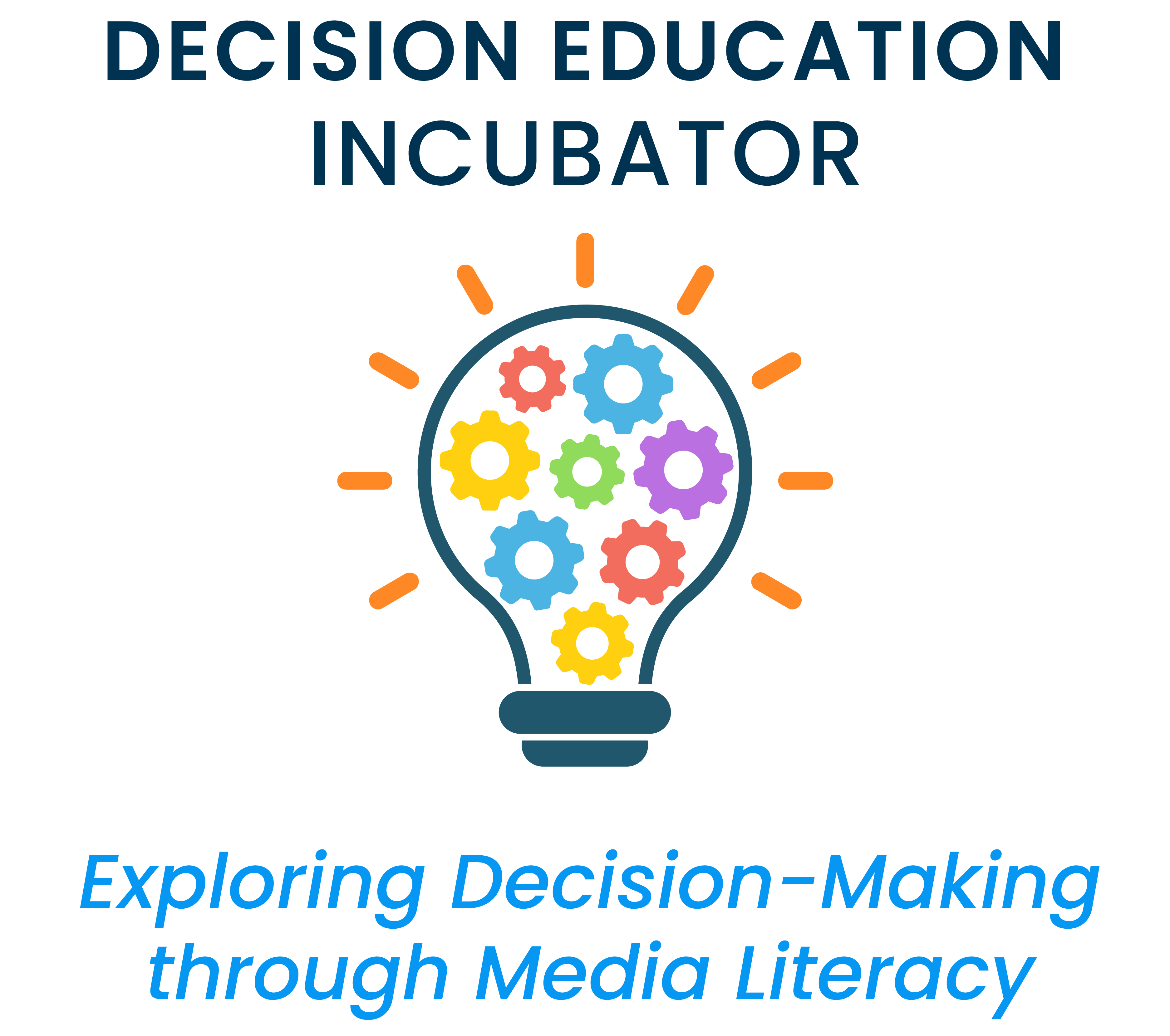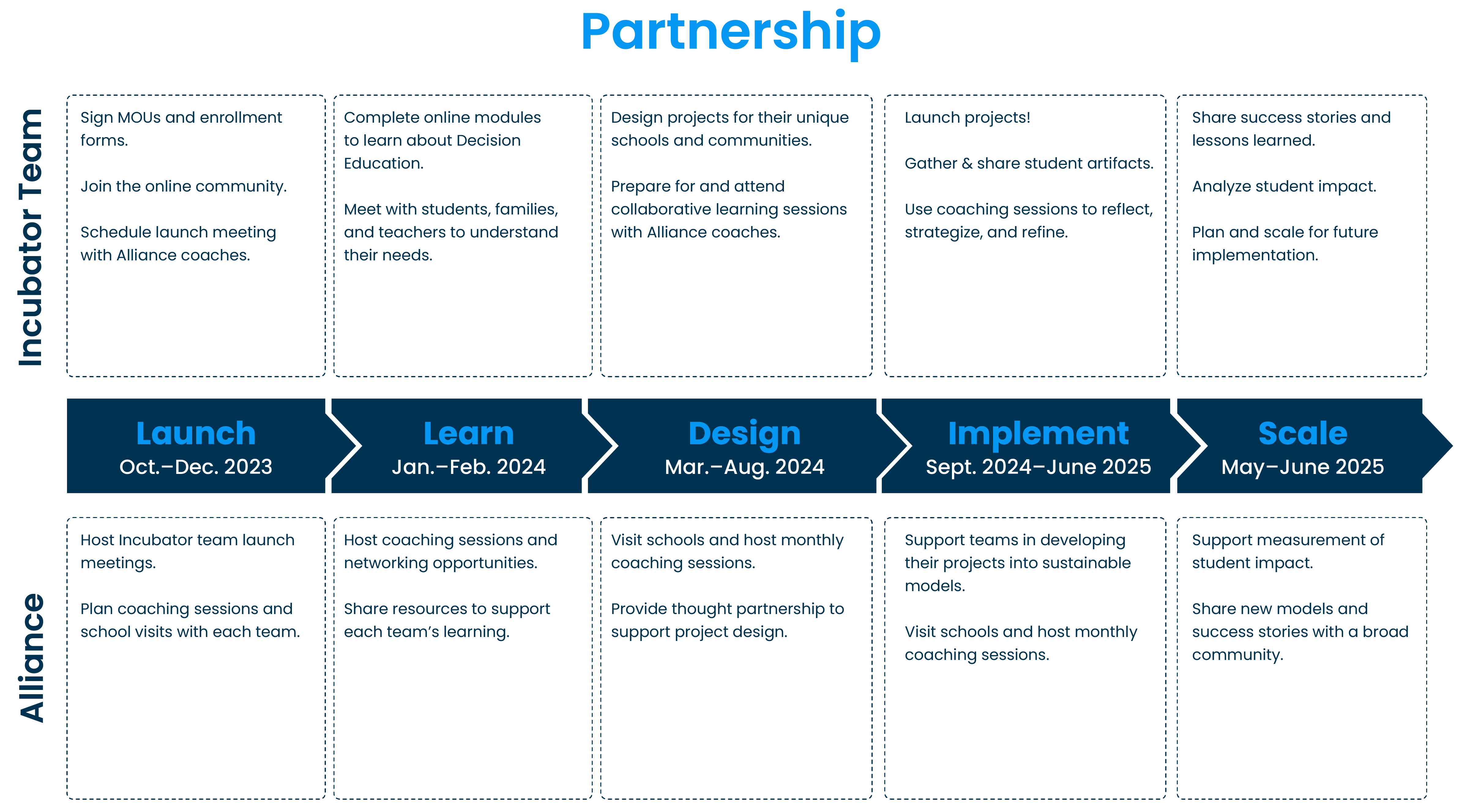About the Incubator
Middle school is a time of tremendous growth and transformation. Students explore their identities and values, develop increased independence and responsibility, and begin to navigate complex social issues. As these changes are happening, students are inundated with information, ads, and social media designed to influence their thinking. Media literacy teaches students the skills to understand and deeply process different types of communication and information. Decision Education develops the skills and dispositions for students to determine for themselves what they value, what is true, and what to do. Together, media literacy and Decision Education can support students to become better decision makers.
We are excited to announce the launch of our second Decision Education Incubator: Exploring Decision-Making through Media Literacy, a fully funded opportunity for schools to design and pilot new instructional models that can be scaled nationally.

The application for the Incubator is now closed.
The Opportunity for Schools
Each school accepted into the Decision Education Incubator receives:
- An opportunity to move the needle on ensuring their students have the skills and strategies to become strong decision makers.
- $25,000 in funding provided over 18 months to support professional learning, new instructional model design, and student implementation.
- Individualized coaching, partnership, and support from the Alliance.
- Collaboration with other schools in the Incubator Network.
- Potential media coverage, including features on school projects, participating teachers, and the student experience.
School Requirements
Beginning in January 2024, all team members:
- Attend the two-day Network Retreat in Philadelphia, PA the weekend of March 1-3, 2024. (Travel and accommodation costs will be covered by the Alliance.)
- Engage in our online learning community.
- Participate in virtual monthly coaching sessions with the Alliance.
- Complete our online, asynchronous Introduction to Decision Education course.
- Work as a team to design, draft, and share an instructional model that teaches Decision Education skills and concepts to develop students’ media literacy.
During the Fall of 2024 and Spring of 2025, team members:
- Implement the instructional model with at least one grade level of students.
- Participate in virtual monthly coaching sessions with the Alliance.
- Collect relevant student and teacher data and artifacts to document learning, implementation strategies, and the student experience to share with the Alliance and, eventually, other schools.
